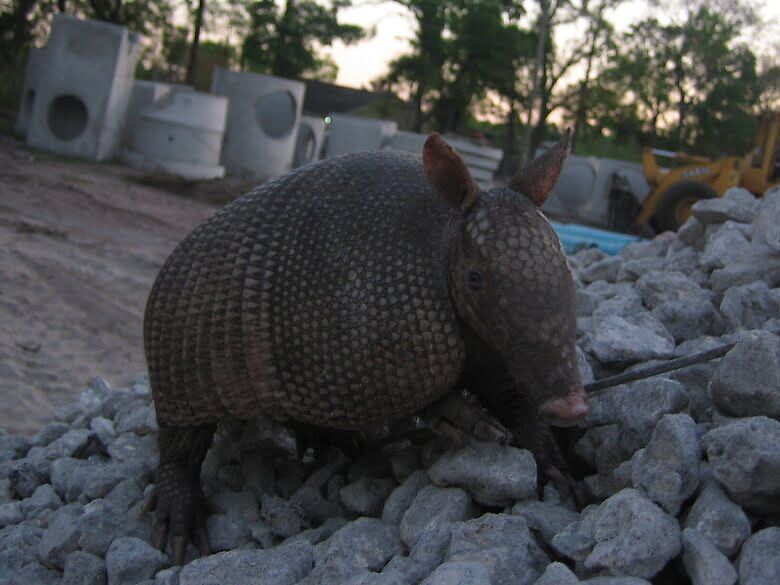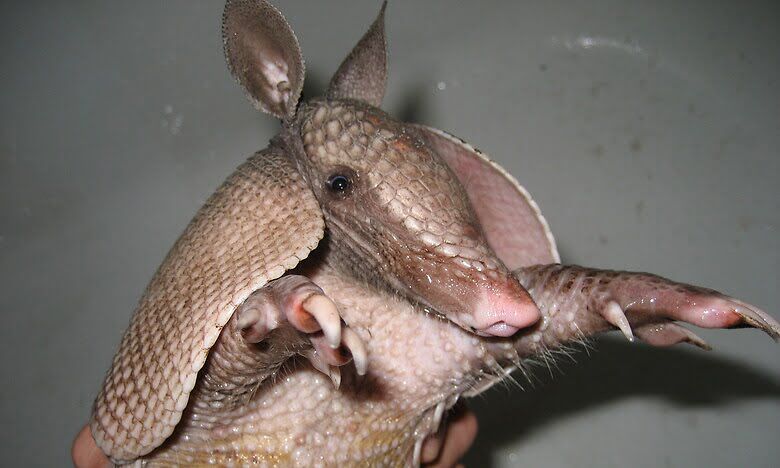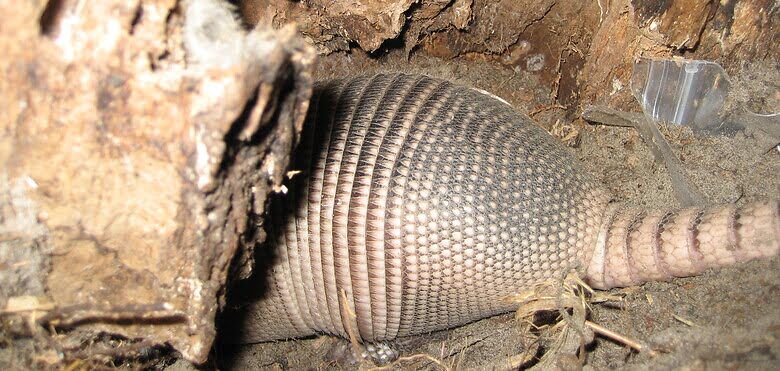About Nuisance Armadillos
The armadillo is a strange-looking creature, native only to the Americas and synonymous to many Americans with the South. What might surprise people is that this small, armored mammal is slowly spreading north due to the lack of natural predators. Famed for their defensive tactic of rolling into a tight ball of impenetrable armor, readers might be surprised to learn that only the three-banded armadillo has this ability. If you were surprised about that little fact then this article is for you, as we’re going to look in-depth at this common critter that often, not a lot is known about.

Biology
Species
According to National Geographic, there are 21 species of armadillo, varying in size and characteristics. Many of these species are exclusive to South America; however, a few of these critters are moving into the United States, most commonly, the nine-banded armadillo.
Habitat
Armadillos require a warm climate due to their slow rate of metabolism and lack of body fat.
Diet
Armadillos are true omnivores and this diet means they can find a meal almost anywhere, which can be great when eating pests, like grubs, but devastating when they start eating cash crops.
Eyesight & Sense of Smell
The armadillo has poor eyesight and relies on its sense of smell to interpret the world around it and find food. It is this poor eyesight that can bring them into close proximity with humans and their sense of smell finding bins that can cause problems.
Sleeping Habits
People most often see these creatures during a very small window when they are active, as many armadillos will sleep up to 18 hours per day.

Problems Caused by Armadillos
Armadillos are a non-aggressive animal, preferring to hide than face a threat, although they have very sharp and powerful claws they will use if they have too. So, it’s best to keep a distance when possible.
The problems caused by armadillos fall into three categories which will be listed here as they are a passive pest.
- Destruction of plants, gardens, and nurseries – amateur and professional growers who live in the range of armadillos will be well aware that an armadillo has the potential to uproot plants and even eat fruits and flowers that are growing. Many of these gardens can feature rare and/or expensive plants, and the armadillo is not discerning about the value of a meal. This devastation can cost farmers and growers thousands of dollars in a single incident.
- Livestock – the armadillo is a burrowing animal, using these as homes and methods of defense, this can compromise the integrity of the ground. The holes and soft ground, when stepped in, can cause dreadful injuries to livestock leaving them either crippled or needing to be euthanized. This can be potentially very expensive and also reduce the profitability of a herd.
- Disease – one potential problem associated with armadillos is the spread of disease, most famously, leprosy. It is true that the armadillo can harbor the leprosy bacteria; however, this requires close contact with the infected armadillo to contract the bacteria. Another small risk is the rabies virus; most armadillos do not carry this. However, be careful of the animal if it doesn’t seem shy around people and is acting aggressively.
Keeping Armadillos Out
The armadillo is a skilled burrower and, surprisingly, very agile. The best way to keep out armadillos and prevent the damage they cause can be very simple.
- Strong Fences – Many pest control experts recommend strong fences that are at least five feet tall and go at least a foot into the ground.
- Hot Chili Powder – Also shown to be effective is the spreading of hot chili powder around your perimeter. Due to the highly sensitive nose of the armadillo, sniffing this unpleasant powder may cause the critter to flee and not consider returning.
- Woodchips – Where fencing is not possible, another method to prevent digging is to spread woodchips around your garden areas as this becomes difficult for the armadillo to dig through.

Professional Removal Tactics
Control may be approached from several aspects: environmental, mechanical, and chemical. In urban and suburban areas, alteration of the vegetation is most often unacceptable or impossible due to the location of these. In areas where prudence, common sense, and laws permit, shooting is a good control measure. Daytime shooting is easiest and most productive during the colder winter months when the animal reverts to diurnal behavior. Night shooting with a spotlight is also feasible but more time-consuming.
Traps
Steel traps are not recommended for use in urban lawns and gardens where a major part of reported damage occurs. A variety of commercially available live traps or homemade box traps will work so long as the minimum size is 1x1x3 feet. In areas of dense human habitation, this is the preferred method of control.
- The traps should be set near buildings in areas where digging sign appears or near fences, burrow entrances, or trails.
- Baits ranging from broken eggs, fetid meats, mealworms, over-ripe fruits, and meat, filled with maggots have been recommended by various sources.
Chemicals
Chemical control is very limited since there are no pesticides registered in the United States at this time naming armadillos on the label.
- Elimination of the food supply attracting the animals to yards and lawns may be an effective indirect chemical control.
- Fumigation of burrows known to be inhabited by the target animal has been used in the past quite effectively.
- Although calcium cyanide, carbon bisulfide, methyl bromide, and gas cartridges all are effective, the latter is preferred largely because of the ease of handling.
